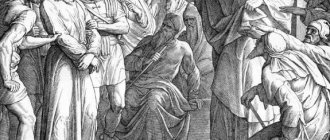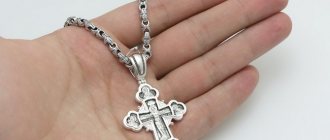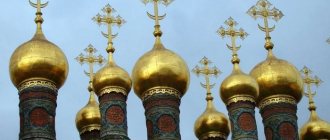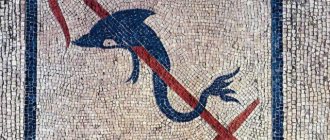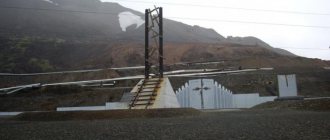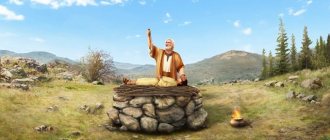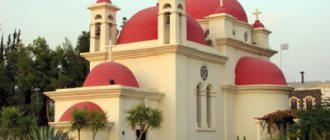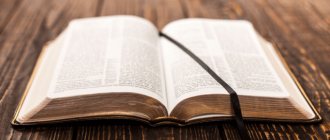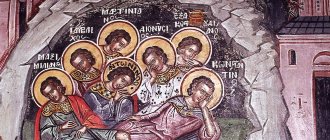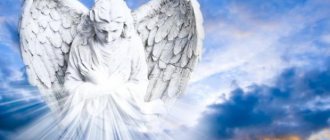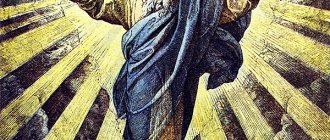The bright holiday of Easter is approaching - one of the main religious celebrations, when Christians all over the world glorify the resurrection of the Savior
Subscribe and read Express Newspaper in:
This event became a symbol of eternal life and atonement for sins. But today, remembering biblical stories, we cannot even imagine what hellish torment CHRIST experienced. Research conducted over the years, supported by medical reports, confirmed the words of CICERO: death on the cross is “the most terrible of all executions that people have come up with.”
Crucifixion as a method of execution was introduced into use by the Babylonians, who did not want to desecrate the earth with the dead bodies of executed criminals. The Greeks considered this punishment extremely humiliating, and the Jews called those hanged on the cross damned. In Rome in the 1st century. BC. crucifixion was widely used to punish slaves, deserters and state criminals.
There are many theories as to what ultimately finished off the unfortunate people who were executed in such a painful way. The most likely cause of death for someone crucified on the cross is considered to be suffocation.
Horror 1. Impossible to breathe normally
When a victim crucified by the hands and feet was lifted onto the cross, the chest was overstretched under the influence of the body weight. The unfortunate man had to constantly raise himself on his feet and hands to ensure the mobility of the diaphragm. As soon as the exhausted muscles weakened, the body hung on nails. Carbon dioxide accumulated in the lungs, and the person could no longer resist suffocation.
Horror 2. Nails pierced exposed nerves
Trying to pull himself up to inhale, the executed man further injured his wrists, pierced by a jagged tetrahedral nail. Which, by the way, could lead to blood poisoning.
Even if a weakened person stopped fighting for life and hung motionless, the constant contact of the nerve with a piece of metal caused unbearable pain. (The sensations during dental treatment without anesthesia are nothing compared to what the crucified experienced.)
Horror 3. The victim choked on vomit
When the unfortunate man, tormented by scourging, lost 1 - 1.5 liters of blood, he began to sweat profusely, and thirst overcame him even more. The poor fellow was tormented by nausea and vomiting. As a result, the person risked choking on his own vomit.
Horror 4. Joints were cracking from the load
At the moment when the victim’s hands were nailed to the beam and the cross was placed vertically, the weight of the body rested entirely on the hands. This was enough to dislocate both shoulder joints. As a result, the arms moved beyond the normal range of motion by 15 centimeters. The movement along the cross completely tore the skin off my back, which had been torn to shreds.
Horror 5. All organs failed
The inability to breathe normally, caused by pressure on the diaphragm, and the flow of blood into the lower part of the body led to the fact that almost all vital organs began to suffer due to lack of oxygen. When, because of this, all organs simultaneously fail, the body of the crucified person turns into a clot of incessant pain.
Horror 6. Legs were broken
If the Roman executioners thought that the process was dragging on and the condemned person was not dying for a long time, they crushed his femur with a hammer. This manipulation completely deprived the person of the ability to move and resist suffocation, and death came faster.
Horror 7. My heart was breaking
One of the executioners “pierced Jesus’ ribs with a spear,” after which “blood and water” flowed from his chest. Perhaps extensive hemorrhage occurred after the rupture of the heart wall, when blood mixed with fluid from the pericardium - the pericardial sac. This may explain the fact that Christ did not die the usual death of the crucified from strangulation, but from a heart attack.
Where to see the relics
A number of Christian shrines relating to biblical events associated with the last days of the life of JESUS CHRIST are especially revered. They are scattered all over the world, the authenticity of some of the items is disputed, and some are presented in several variations.
- THE CROSS on which Jesus . Large fragments are kept in St. Peter's Basilica in Rome (Vatican), in Notre Dame de Paris, in the monastery in Cetinje (Montenegro), in the Cathedral of Santa Maria del Fiore (Florence), in the Museum of the Imperial Residence Hovburg (Vienna) ).
- NAILS with which Jesus was nailed to the cross. It is still unclear how many nails there were. Artifacts are presented in the Basilica of the Holy Cross of Jerusalem (Rome), in the Cathedral of St. Peter (Trier, Italy), in the Cathedral of the Nativity of the Virgin Mary (Milan), in the Kunsthistorisches Museum in Vienna, in Notre Dame de Paris, in the Duomo Cathedral di Monza (Milan), in the Cathedral of Christ the Savior (Moscow).
- TITLO - a tablet with the inscription "Jesus of Nazareth, King of the Jews" - in the Basilica of the Holy Cross of Jerusalem in Rome.
You can see a plaque with the inscription “INRI” in Rome
- The SPEAR with which the Roman warrior Longinus pierced the chest of the crucified Christ is kept in the Etchmiadzin Temple (Yerevan, Armenia).
- VERONICA'S VEIL (Veil of Veronica) is a miraculous image of the Savior that appeared on the scarf that Saint Veronica gave to Jesus Christ when he carried the cross to Calvary. Kept in St. Peter's Basilica in Rome.
- THE CROWN OF THORNS is located in the Cathedral of Notre Dame de Paris.
- CROWN OF THORNS THORKS (about 70): in the Basilica of the Holy Cross in Rome, in the Church of St. John the Baptist in Venice, in the Kunsthistorisches Museum in Vienna, in the Basilica of St. Nicholas in Bari (Italy), in the treasury of the Cathedral of St. Lawrence (San -Lorenzo) in Italian Genoa.
- Turin Shroud - kept in the Cathedral of St. John the Baptist in Turin, Italy.
Cathedral of John the Baptist in Turin, where the famous shroud is kept
- HOLY BLOOD OF CHRIST - you can venerate the vessel with the relic in the Basilica of the Holy Blood in Bruges (Belgium).
Crucifixion - 55 facts:
- This is the most painful death ever invented by man, the term “torment” is more relevant here than ever.
- This punishment was primarily for the most vicious male criminals.
- Jesus was stripped naked, His clothes were divided among the Roman soldiers.
“They divide my garments among themselves and cast lots for my clothing” (Psalm 21 verse 19, Bible).
- Crucifixion guaranteed Jesus a terrible, slow, painful death.
- Jesus' knees were bent at an angle of about 45 degrees. He was forced to bear his own weight with his thigh muscles, which is not an anatomically correct position that can be maintained for more than a few minutes without spasms in the thigh and calf muscles.
- The entire weight of Jesus pressed down on His feet with the nails pierced through them. Because Jesus' leg muscles quickly tired, the weight of His body had to be placed on His wrists, arms, and shoulders.
- Within minutes of being laid on the Cross, Jesus' shoulders were dislocated. Minutes later, the Savior's elbows and wrists were also dislocated.
- The result of these dislocations is that His arms must have been 9 inches (23cm) longer than normal.
- Moreover, in Psalm 21 verse 15 the prophecy was fulfilled: “I am poured out like water; all my bones crumbled.” This prophetic psalm very accurately conveys the feelings of Jesus Christ on the cross.
- After Jesus' wrists, elbows and shoulders were dislocated, the weight of His body through His arms caused pressure on the chest muscles.
- This caused His chest to stretch upward and outward in a most unnatural state. His chest was constantly in a state of maximum inspiration.
- To exhale, Jesus had to rest on his nailed feet and lift his own body, allowing his chest to move down and inward to expel the air from his lungs.
- His lungs were at rest with constant maximum inspiration. Crucifixion is a medical disaster.
- The problem was that Jesus could not rest easily on His legs because His leg muscles, bent at a 45-degree angle, were stiff and extremely painful, constantly in spasms and in an anatomically incredibly abnormal position.
- 1Unlike all Hollywood films about the Crucifixion, the victim was extremely active. The crucified victim was physiologically forced to move up and down the cross, a distance of about 12 inches (30 cm) in order to breathe.
- The process of breathing caused excruciating pain mixed with the absolute horror of suffocation.
- As the crucifixion continued for 6 hours, Jesus could bear less and less weight on His legs as His thighs and other leg muscles became increasingly weaker. The movement of His wrists, elbows and shoulders increased, and the further elevation of His chest made His breathing more and more difficult. A few minutes after the crucifixion, Jesus began to suffer from severe shortness of breath.
- His movement up and down on the Cross to breathe caused excruciating pain to His wrists, His feet, and dislocated elbows and shoulders.
- The movements became less frequent as Jesus became more exhausted, but the horror of imminent death by suffocation forced Him to continue to struggle to breathe.
- Jesus' leg muscles developed excruciating cramps from the pressure of trying to lift his own body to exhale.
- The pain from the two severed median nerves in His wrists literally exploded with every movement.
- Jesus was covered in blood and sweat.
- The blood was the result of the scourging that nearly killed Him, and the sweat was the result of His attempts to exhale. Moreover, He was completely naked, and the leaders of the Jews, the crowds and thieves on both sides of the cross mocked, cursed and laughed at Him. Moreover, Jesus' own mother observed this. Imagine His emotional humiliation.
- Physically, Jesus' body underwent a series of tortures leading to death.
- Because Jesus could not maintain adequate ventilation, He was in a state of hypoventilation.
- Jesus' blood oxygen levels began to drop and He became hypoxic. In addition, due to limited breathing movements, the level of carbon dioxide (CO2) in the blood began to rise, a condition called hypercritical.
- The rising CO2 levels caused His heart to beat faster to increase the flow of oxygen and remove the CO2.
- The breathing center in Jesus' brain sent urgent messages to His lungs to breathe faster. He began to breathe heavily and wheeze convulsively.
- Jesus' physiological reflexes required him to breathe more deeply, and He involuntarily moved up and down the Cross much faster, despite the excruciating pain. The agonizing movements began spontaneously several times a minute, to the delight of the crowd, who mocked Him with the Roman soldiers and the Sanhedrin.
“I am a worm (a red smeared spot), and not a person, reproached by people and contempted by the people. Everyone who sees me mocks me, saying with their lips, nodding their heads: “He trusted in the Lord; let him deliver him, let him save him, if he pleases him.” (Psalm 21 verses 7-9)
- However, due to Jesus' nailing to the Cross and His increasing exhaustion, He can no longer provide oxygen to His body.
- Hypoxia (lack of oxygen) and Hypercapnia (too much CO2) caused His heart to beat faster and faster, and now He developed Tachycardia.
- Jesus' heart beat faster and faster, his pulse rate probably being around 220 beats per minute.
- Jesus had not drunk anything for 15 hours, starting at 6 pm the previous evening. Let us remember that He survived the scourging that nearly killed Him.
- He was bleeding all over His body due to the scourging, the crown of thorns, the nails in His wrists and feet, and the multiple lacerations He received from beatings and falls.
“...But He was wounded for our sins and tormented for our iniquities; the punishment of our world was upon Him... He was tortured, but He suffered voluntarily and did not open His mouth; like a sheep He was led to the slaughter, and like a lamb before its shearers is silent, so He opened not His mouth.” (Bible, Book of the Prophet Isaiah 53 verses 5,7)
- Jesus was already very dehydrated, His blood pressure had dropped to its lowest point.
- His blood pressure was probably around 80/50.
- He was in first degree shock, with hypovolemia (low blood levels), tachycardia (excessively fast heart rate), tachypnea (excessively fast breathing) and hyperhidrosis (excessive sweating).
- Around noon, Jesus' heart probably began to slip.
- Jesus' lungs probably began to fill with pulmonary edema.
- This only aggravated his breathing, which was already very difficult.
- Jesus experiences heart and respiratory failure.
- Jesus said, “I am thirsty,” because His body was crying out for liquid.
“My strength is dried up like a potsherd; my tongue clung to my throat, and You brought me to the dust of death.” (Psalm 21:16)
- Jesus was in dire need of intravenous blood and plasma to save His life.
- Jesus could not breathe properly and was slowly suffocating.
- At this stage, Jesus probably developed a circulatory disorder (Haemopericardium).
- Plasma and blood collected in the space around His heart, called the pericardium. “My heart became like wax; it melted in the midst of my being.” (Psalm 21:15)
- This fluid around His heart caused cardiac tamponade (which prevented Jesus' heart from beating properly).
- Due to the increasing physiological demands of the heart and the development of Haemopericardium, Jesus likely ultimately suffered a ruptured heart. His heart literally burst. Most likely, this was the cause of His death.
- To slow down the death process, the soldiers placed a small wooden ledge on the Cross that would allow Jesus the "privileged" bearing of his weight on the cross.
- The result of this was that people could die on the cross for up to nine days.
- When the Romans wanted to hasten death, they simply broke the victims' legs, causing the victim to suffocate within minutes.
- At three o'clock in the afternoon Jesus said, “It is finished.” At that moment He gave up His Spirit and died.
- When the soldiers came to Jesus to break His legs, He was already dead. No part of His body was broken to fulfill the prophecies.
- Jesus died within six hours, after the most painful and horrific torture ever invented.
- He died so that ordinary people like you and me could be participants in the Kingdom of Heaven.
“For He made Him who knew no sin to be sin for us, so that in Him we might become the righteousness of God.” (2 Corinthians 5:21)
Four-pointed cross
The four-pointed cross is one of the most ancient variants of Christian symbolism. The cross of the Armenian Church, in which Christianity was recognized as the state religion for the first time in the world at the beginning of the 4th century AD, was and remains four-pointed.
In addition, crosses not only on ancient, but also on the most famous Orthodox cathedrals have a four-pointed shape. For example, at the Cathedral of Hagia Sophia in Constantinople, the Assumption Cathedral in Vladimir, the Transfiguration Cathedral in Pereslavl, and the Peter and Paul Orthodox Church in St. Petersburg.
You can also find crosses with a crescent. The crescent on the cross, according to different versions, symbolizes the anchor (the Church as a place of salvation), the Eucharistic Chalice, the cradle of Christ or the baptismal font.
However, if in Orthodox churches the four-pointed form of the cross is not often found, then in the Catholic Church only one version of the cross is used - the four-pointed one, otherwise called the Latin cross.
Week after the crucifixion by day
After the crucifixion of Jesus, preparations for His Resurrection began to come to an end. During Friday, Saturday and Sunday, the Savior made preparations for appearing on earth in his new transformed body, and also completed the work of cleansing humanity from sin.
To understand the whole situation, it is worth considering each day in detail:
Friday
Christ gave up his ghost towards evening. During this time, Joseph received permission from the procurator Pontius Pilate to remove the corpse from the cross (previously, this was prohibited). As the Savior’s body was separated from the cross, it was carried to a cave, where preparations for burial began.
The sufferer's body was washed with incense, wrapped in sheets and placed in a coffin. But since the day before was the bright holiday of Easter, they decided to postpone the final preparations. But the grief of loss did not allow Christ’s friends to sleep and they grieved all night.
Saturday
The high priests remembered what Christ told them. According to His prophecy, the Son of God should rise three days and three nights from the day of his execution. This moment greatly excited the Pharisees and scribes, who understood that during the real resurrection of the Lord their political influence in society would be greatly shaken.
Therefore, they turn to Pontius Pilate to give them an army to guard the cave. The procurator gives the go-ahead and on Saturday soldiers are assigned to the cave to guard it. On the night from Saturday to Sunday, a loud voice struck the sky. From there two dazzling young men descended and opened the entrance to the cave. Then they came back out, supporting the third by the arms. The soldiers began to think about what to do in this situation. Meanwhile, a certain man again descended into the cave. Then the soldiers hurried to the procurator.
The soldiers told everything they saw. The high priests were also present at their story. The Pharisees and scribes became agitated, and Pilate replied that you were pure before the Son of God; you committed the sin. The clergy have not changed, maintaining their craving for earthly things.
They asked the procurator to order the soldiers to spread the word about this matter. Otherwise, the Jewish people will kill their Holy Fathers with sticks and stones. Pilate listened to them and forbade his soldiers to talk about the Resurrection of Christ.
Sunday
On this day the Savior was resurrected. The first who saw Him in a transfigured form was Mary Magdalene, who came to the cave to put the body of the deceased in order. But in his place she found a certain man who looked like Jesus, but seemed to be hovering above the earth. With this happy news, she ran to the apostles, to whom she announced the resurrection of the Savior.
Orthodox Life
According to the legislation of the Roman Empire, seriously guilty slaves, who were not even considered human, were executed on the cross, as well as inveterate robbers, rebels who committed serious or repeated or mass murders.
In the pagan world, in general, human life was worth very little. It was already in the era of Christianity, thanks to the Redemptive Feat of our Lord Jesus Christ, that it acquired great value. The pagan world treated violent death, in particular executions and murders, much more simply and harshly. The pagans knew a lot about torture, especially the Romans, who fought hundreds of wars and executed tens of thousands of people, knew a lot about them. And it was precisely such “virtuosos” of torture as the Romans who recognized death on the cross as the most painful and cruel.
Why? The cross was made with a crossbar for the arms and a vertical wooden ledge was left for the head, which was higher than the horizontal crossbar so that the executed person could rest his head on it. This was done in order to delay death, which during crucifixion was more of a blessing than an execution.
Saint Innocent, Archbishop of Kherson and Tauride, in his work “The Last Days of the Earthly Life of Our Lord Jesus Christ” writes that a seat was made in the middle of the pillar of the cross so that the executed person could sit down. Otherwise, the palms, pierced with nails or tied, would have torn under the weight of the weakening body - and the person would have fallen from the cross. Also often, a tablet was nailed to the upper column on which the head of the executed person rested, where the guilt of the criminal was written. In the case of Christ - “King of the Jews.”
The torment of the crucified was terrible, very terrible. Many hours of immobility in an unnatural inverted body position. Every hour it weakened and sagged, tearing apart the wounds from the nails. As a result of bleeding wounds, blood flow throughout the body worsened, causing terrible pain to the sufferer.
Let us imagine, dear brothers and sisters, that the Savior was crucified at noon on an eastern day, on the place of execution, on the top of a mountain, when the sun was at its zenith and there was no shadow anywhere. The temperature of the hot Middle Eastern air could easily reach forty or even more degrees Celsius. Sweat. Insects that cannot be driven away. Birds pecking at wounds, eyes, etc.
And long, long hours of ever-increasing torment. Truly, the crucifixion is a terrible invention of some evil pagan executioner genius.
The Savior ascended to the Cross voluntarily. He descended into the very depths of human hell in order to bring man out of there. He sanctified with Himself the blasphemous tree of execution. The Most Pure Blood of the God-Man was poured out on him.
The earth shook. In Holy Scripture, this is always a symbol of the fact that something new is happening in the world, qualitatively changing the universe. The dead rose and entered Jerusalem like swallows, as harbingers of the general resurrection of the dead. And even the luminaries faded away - all nature mourned. God died on the Cross for His people. And the church curtain was torn in two - from now on the door to the Kingdom of Heaven is open to man. “It is finished,” said the Savior dying.
GOD'S SALVATION OF PEOPLE HAS BEEN COMPLETED. The first of them entered heaven following Christ. How much God's mercy is in this! There is so much hope for us. Not a righteous man, but a repentant sinner-thief was the first to enter heaven. So we have this opportunity too.
Having outstretched his arms on the Cross, our Lord Jesus Christ - our Heavenly Father - embraces the whole world with Himself. Loving both you and me.
The ERA of the NEW TESTAMENT is coming, when the Heavenly Church unites with the earthly Church through the Redemptive Feat of our Lord and Savior Jesus Christ.
From now on, the door to Heaven is open. We need only, with God's help, to step and enter. Christ on the Cross embraces you and me. Sin has been trampled upon. Hell is broken. Death has been defeated. And we are healed in You, beloved God.
Glory to Your passion, Lord! Glory to Your long-suffering, O Lord!
Priest Andrey Chizhenko
The cross as the central image of the Orthodox faith
It is not surprising that the cross, as a symbol of victory over hell and a reminder of the saving sacrifice of Jesus Christ, is a central subject and symbol in Orthodoxy. So, every Orthodox Christian wears a pectoral cross under his clothes. Priests wear a pectoral cross over their cassocks, and during divine services they bless those praying with the cross. Grave crosses are installed in cemeteries.
Pectoral cross
After the Sacrament of Baptism, the priest places a pectoral cross on the Christian’s neck, which will accompany the person throughout his life. The Savior Himself said:
“If anyone wants to come after Me, let him deny himself, and take up his cross, and follow Me” (Mark 8:34).
It doesn't matter what material the cross is made of. It is important to understand that the pectoral cross is not a piece of jewelry, not a talisman or amulet, but the main symbol of Christianity and the greatest shrine. The crucifix should be treated with reverence.
Priest's pectoral cross
Until the 18th century in Russia, pectoral crosses (worn on the chest (on the chest)) were worn as a church order for special merits in spiritual work. It was only after 1896 that the tradition of wearing a cross over clothing appeared to distinguish priests from other clergy.
Liturgical cross
Used during services to bless worshippers.
Other types of crosses
Orthodox Christians, according to pious tradition, install worship crosses at the sites of significant events that took place. They are also placed at the entrance and exit of populated areas. Crosses are also drawn in residential premises after consecration. Grave crosses are often used at graveyards and burial sites. Thus, the crucifixion of Jesus Christ accompanies a believer both during life and after death.
“What do you think, are we carrying some great crosses? Only the Cross of Christ was very heavy, because Christ, out of love for us - people - did not want to use His divine power for Himself. And after the Crucifixion, He took, takes and will take upon Himself the burden of the crosses of every person and His divine help and His sweet consolation eases us from the pain of trials. The good God gives everyone a cross in accordance with his strength. God gives man a cross not so that he can suffer, but so that from the cross man can ascend to Heaven. After all, in essence, the cross is a stairway to Heaven” (Reverend Paisius the Svyatogorets “Words. Family Life”).
The miraculous power of the Crucifixion
Many miracles occur through the grace-filled action of the Life-giving Cross. The cross protects from dark forces and people who serve these forces. There are many stories when sorcerers, psychics, “healers” could not influence a person who wore a cross on his body. There are no fewer examples of how, by making the sign of the cross and reciting a prayer to the Life-giving Cross of the Lord, a person miraculously avoided misfortune.
“The image of the Cross shows the reconciliation and community into which man has entered with God. Therefore, demons are afraid of the image of the Cross, and do not tolerate seeing the sign of the Cross depicted even in the air, but they flee from this immediately, knowing that the Cross is a sign of the fellowship of man with God and that they, as apostates and enemies of God, are removed from His Divine face , no longer have freedom to approach those who have reconciled with God and united with Him, and can no longer tempt them. If it seems that they are tempting some Christians, let everyone know that they are fighting against those who have not properly learned the high sacrament of the Cross” (Rev. Simeon the New Theologian).
Read us conveniently on social networks:
Tags: Jesus on the cross, crucifixion of Jesus, crucifixion of Jesus Christ, crucifixion of Christ
Crucifixion - what is it
More than 2000 years ago, the most notorious villains, murderers, and fugitive slaves were crucified on the cross. This type of execution was widespread throughout the Roman Empire. Among the Jewish people enslaved by the Romans, execution on the cross appeared in the 1st century BC. The last Jewish ruler, Antigonus, was crucified in a similar way. The crucifixion of Christ is the central symbol of Christianity.
Crucifixion of Christ
